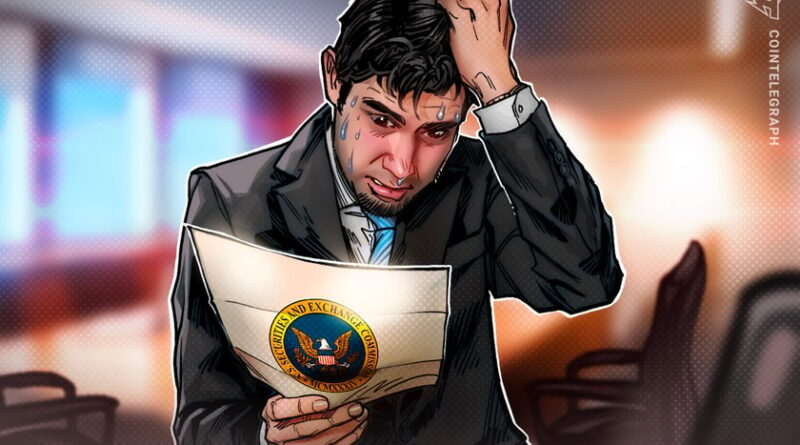What is a Wells notice, explained
A Wells notice is a letter from the SEC indicating possible enforcement action against a person or a firm.
How to avoid receiving a Wells notice?
It is crucial to abide by all applicable laws and rules governing securities transactions and disclosures in order to prevent obtaining a Wells notice.
Businesses must also have a robust internal compliance program that regularly provides staff training on legal requirements and the potential repercussions of noncompliance. In order to assure accuracy and completeness, it is also crucial to undertake thorough assessments of all financial and operational disclosures on a regular basis.
Maintaining open and transparent communication with authorities, investors and other stakeholders is also crucial. This involves being timely in responding to any queries or worries expressed by regulatory bodies and proactive in disseminating pertinent information and updates.
Working with knowledgeable legal and financial experts who are aware of the regulatory environment and can offer advice on compliance issues is crucial. Individuals and organizations can lessen their chances of obtaining a Wells notice and safeguard themselves from potential enforcement action by following these steps.
What is the difference between Wells notices and subpoenas?
While there are differences between Wells notices and subpoenas, both are important legal tools used in regulatory and legal investigations, and both should be taken seriously by the recipients.
A Wells notice is a notification of potential enforcement action, whereas a subpoena is a legal document that requires the recipient to produce documents, testify or provide other evidence in an investigation or legal proceeding.
In February 2023, a subpoena from the SEC was disclosed to have been received by trading platform Robinhood regarding Robinhood Crypto’s supported currencies, custody of cryptocurrencies and other platform operations.
Here are the differences between Wells notices and subpoenas:

How can investors respond to a Wells notice?
Some general practices to consider when responding to a Wells notice include consulting with an attorney, reviewing the allegations and developing a strategy to respond, among others.
Engage legal counsel
Getting a Wells notice can be a difficult and stressful process, so it is crucial to consult a qualified securities lawyer to get a legal defense. The best course of action can be decided after reviewing the allegations of wrongdoing with an attorney. To comprehend the SEC’s concerns and the information it has acquired, it is important to carefully read the allegations in the Wells notice and any accompanying documentation.
Create a response plan
Work with the lawyer to create a response plan that addresses the accusations and makes a strong defense. This can entail compiling further proof or spotting holes in the SEC’s argument.
Respond promptly
It is crucial to react to the Wells notice as soon as possible and by the SEC-set time. This demonstrates one’s willingness to take legal matters seriously and can lessen any potential civil penalty or fines.
Take into account settlement possibilities
Depending on the seriousness of the charges, it can be advantageous to take into account SEC settlement options, such as consenting to a cease-and-desist order or paying fines or penalties.
Maintain open communication
One should keep lines of communication open with a lawyer and the SEC employees involved in the matter at all times. By doing so, all parties involved can make sure they are well informed and identify any potential problems or obstacles.
Be prepared for potential outcomes
While receiving a Wells notice does not necessarily mean that enforcement action will be taken, it is important to be prepared for potential outcomes and understand the potential implications for one’s investments or business operations.
How do Wells notices work?
A Wells notice is not a final determination of guilt or wrongdoing, meaning that the recipient has the chance to respond and make a case before any administrative action is initiated. The Wells notice procedure, though, is a clue that the SEC is considering taking action, and how it turns out might have a big impact on the recipient and any linked investors.
Consider the case where the SEC is looking into possible insider trading offenses at a publicly traded business. The SEC suspects that one of the company’s officials may have engaged in prohibited stock trading before a significant announcement was made based on non-public information.
The SEC would issue a Wells notice to the suspected employee in this situation, alerting the person to the inquiry against trading violations and giving the individual a chance to refute the charges before deciding whether to take enforcement action. So, what happens after a Wells notice is issued? Normally, the Wells notice would list the precise charges against the person and provide a deadline to reply to the SEC, as stated in the steps below.
Here’s how the Wells notice process typically works:
Investigation
To ascertain whether there is sufficient justification for taking enforcement action, the SEC looks into potential violations of securities laws.
Notification
The SEC will issue a Wells notice to the person or business in question if it decides that there is enough proof of potential misconduct. The Wells notice will normally list the particular accusations and provide the addressee a chance to reply, known as a “Wells response.”
For instance, Coinbase received a Wells notice in March 2023 from the SEC, who identified potential securities law violations in relation to some of its listed digital assets, the Coinbase Earn staking service, Coinbase Prime and Coinbase Wallet. The SEC issued the Wells notice after conducting a preliminary investigation.
Response
The Wells notice receiver may reply in writing or ask the SEC for a meeting in person to discuss the charges and give a defense. This response could contain arguments or supporting data to back up the defense, as well as any pertinent mitigating circumstances.
Decision
The SEC will decide whether to move further with enforcement action based on the response and any other data gathered. The SEC may file a complaint in federal court seeking fines or other remedies if it decides to pursue legal action or charges of securities fraud.
What does Wells notices mean for investors?
Investors should keep informed and consult with legal and financial experts to understand their options and possible risks because receiving a Wells notice can have major consequences for them.
A Wells notice is a formal notification from the Securities and Exchange Commission (SEC) that it is considering bringing enforcement action against an individual or entity. A Wells notice normally indicates that the SEC has completed an investigation and has discovered evidence of possible violations of the securities laws. But why is it called a Wells notice?
A Wells notice is named after John Wells, who was the SEC’s general counsel from 1972 to 1976. Wells played a key role in creating the processes the SEC employs to launch enforcement actions against financial misconduct by people and businesses. The SEC adopted these procedures in 1972, giving them the names “Wells procedures” and “Wells notices.”
So how serious is a Wells notice? Getting a Wells notice can worry investors because it implies that the business or person they invested in can be subject to legal action. A Wells notice, however, should be understood as an opportunity for the recipient to address the charges and make a case before the SEC decides whether to take enforcement action rather than as a final verdict of guilt or violation.
A Wells notice may impact investors in many ways — the price of the company’s stock or other securities may drop after receiving a Wells notification. Also, it can cause investors to become uncertain and concerned, which would impair their willingness to invest in the business or the overall market.
In rare circumstances, the resolution of a Wells notice may lead to fines, penalties or other sanctions being imposed against the involved company or person. These outcomes could significantly affect the company’s financial situation and future prospects, depending on the seriousness of the claimed infractions.
Related: What are the Howey test and its implications for cryptocurrency?




